Gray Koalas
The Gray koalas, as the name illustrates are the gray-colored koalas from Australia's Eastern and North Eastern regions. The Gray koalas natively belong to Australia's state of Queensland. Since these koalas belong to the Queensland region, they are also termed as the Queensland koalas. Another name which the biologists use to call the Gray koalas is the Northern Koalas.
The Gray koalas natively belong to Australia's Queensland region. The Gray koalas, as the name suggest have a gray colored fur on their bodies.
Unlike the brown koalas which have one of the thickest furs, the furs of the Gray koalas are one of the thinnest ones. Furthermore; the hair on the furs of the Gray koalas are also very short as compared to the brown koalas. All of these distinctive characteristics of the Gray koalas have prompted the biologists and the researchers to consider them as one specific type of koalas within the koalas' family.
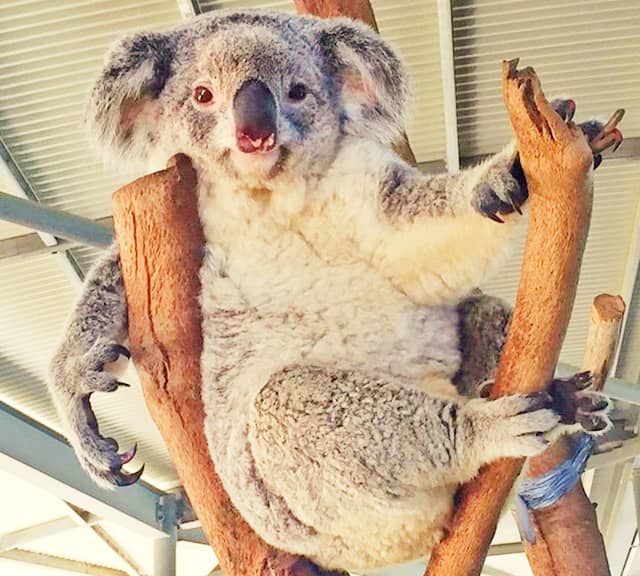
When it comes to the size of the Gray koalas, they are very small. In fact; the Gray koalas are considered as the smallest amongst all the Australian koalas. According to the biologists the further north you go in Australia's koala regions, the koalas' size become smaller while the further south you go, the koalas' size become bigger.
They Gray koalas are the smallest species of koalas in Australia. The male Gray koalas weigh almost around 7 to 9 kilograms in weight.
This is absolutely ture because the Gray koalas in north are the smallest while the Brown koalas in the south are the biggest. The Gray koalas usually weigh in between 7 to 9 kilograms. Females are even more smaller and they are supposed to be less than 5 kilograms in weight. The average length of the Gray koalas is in between 1 foot to 1.5 feet.
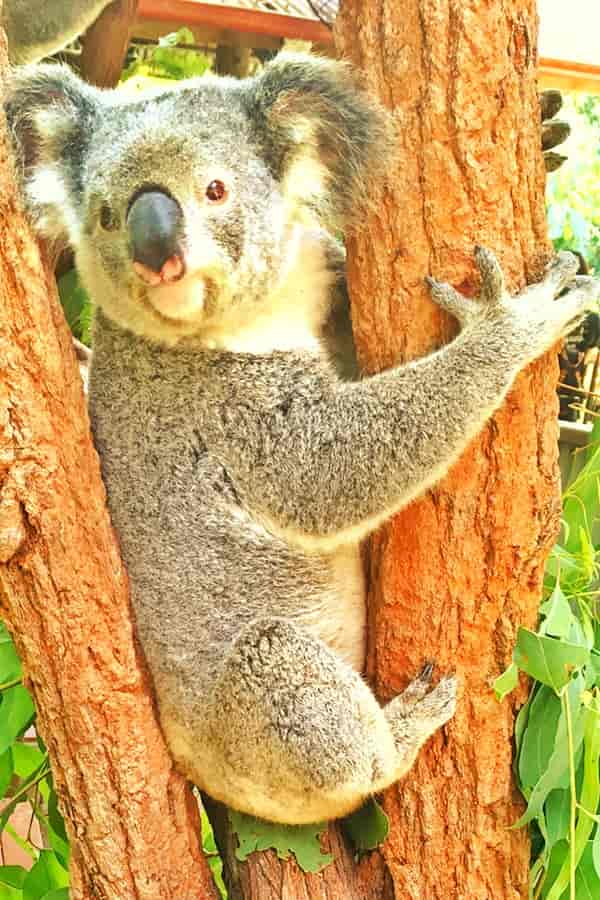
The severity of the climate and the habitat of the Queensland have certainly made a huge impact on the physical characteristics of the Gray koalas. The Queensland climate is very harsh and dry. Droughts are often very common. Their gray-colored fur certainly helps the Gray koalas to avoid the heat toll of the weather.
The Gray koalas face very harsh and dry environment within the Queensland region. Over the past 20 years the Queensland has lost 80% of its Gray koala population.
Similarly; the habitat is scarce in Queensland and the food resources are not available in abundance. Consequently; the koalas' sizes have been minimized genetically. It is believed that from the last 20 years or so the Queensland has lost more than 80% of its koala population and today only 24,000 koalas (Gray Koalas) are left within Queensland.
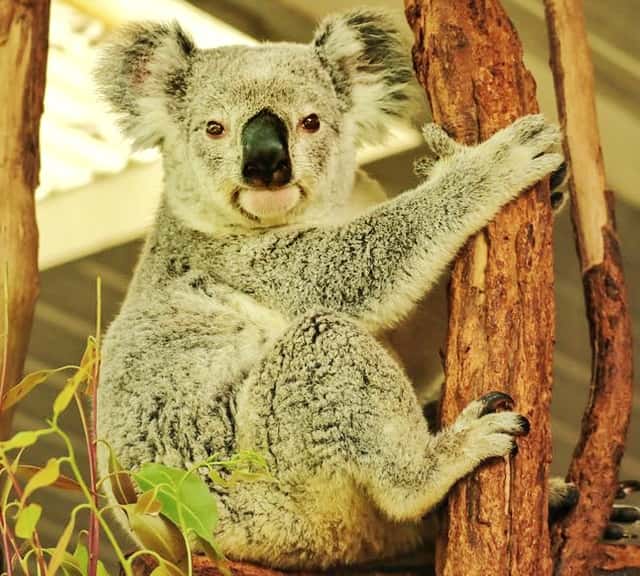
The most dominant area of the Gray koalas within the Queensland region is the Maranoa region. Maranoa has a lot of rich habitat for the Gray koalas and this is the key reason for the thriving Gray koala population within the region.
Maranoa is the most dominant region of the Gray koalas within Queensland. Maranoa has as many as 8000 Gray koalas. Other key koala regions within the area are Flynn and Capricornia.
According to the Australian Koala foundation, as many as 8000 Gray koalas are part of the Maranoa region. Flynn and Capricornia are the other two regions within the state of Queensland that have as many as 4000 and 2400 koalas respectively. Habitat loss, farming and urbanization are the key challenges which the koalas are facing today in Queensland and it is threatening their survival.
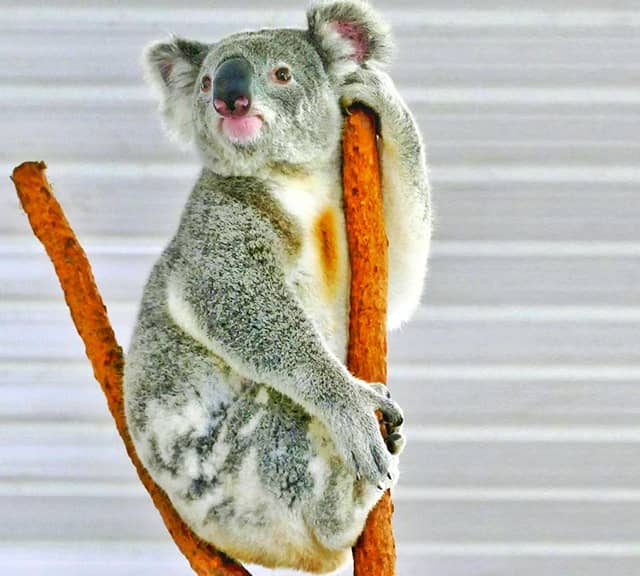
Today; the dwindling population of the Gray koalas have put them on the second spot after the Brown koalas. The Brown koalas are the most dominant ones in Australia, when it comes to their numbers (almost 50,000). Even the Brown koalas are thriving so rapidly within the Victorian region that the authorities are considering some of the over-populated brown koalas to the Queensland region.
The Gray koalas were once the most widely spread koalas in Australia. Today; they are on second in their numbers behind the Brown koalas from of Victoria.
However; despite the fact that the Gray koalas have moved to the second spot, they are still the most popular koalas across the Australian continent and throughout the world as well. The primary reason; everyone thinks of the koalas as the gray-colored rather than the brown-colored. Moreover; on international forums and websites the koala pictures which people mostly see are of the Gray koalas.
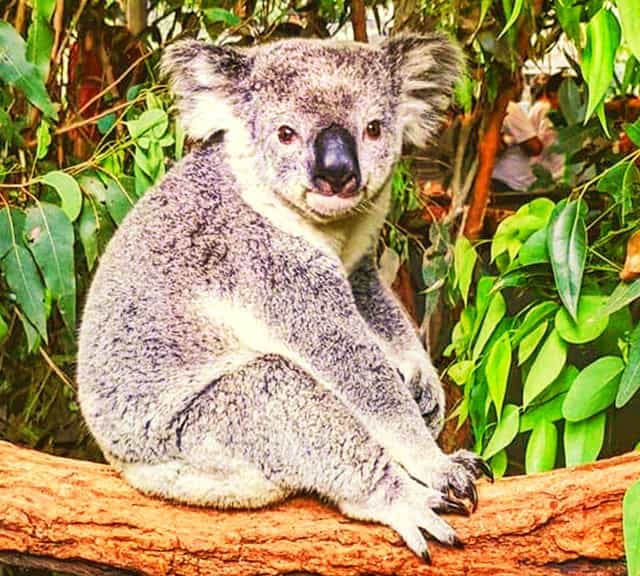
Even though the Gray Koalas are the smallest of all the koalas, they have still been very competitive. They were once the most thriving koalas in Australia. These koalas have physically evolved themselves in accordance with the regional weather. First of all their gray fur is highly suited for the higher temperatures of the Queensland. Secondly; their thin fur and small hair are also very essential to cope with the hot summers. Lastly; their size is equally essential for their survival because the Queensland's habitat doesn't always promises abundance of food supply (Eucalyptus leaves).
The presence of gray fur, short hair and less thickness allow the Gray koalas to survive against the harshest environment of the Queensland regions.
Therefore; physically these gray koalas are perfectly built to survive and thrive within the harshest conditions of the Queensland. However; if the authorities will relocate them to the Southern regions it will be very challenging for these koalas to resist the colder climates.
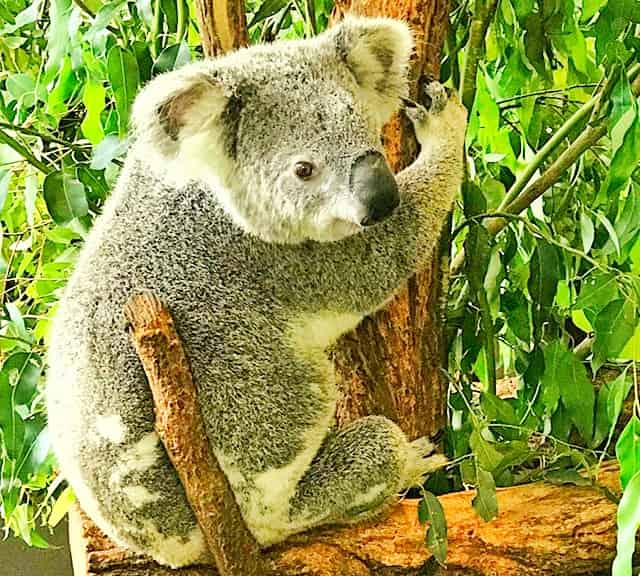
Liger Articles
Marsupials vs. Placental Mammals
Koalas are most popular animals in Australia
Koalas are more popular as compared to Kangaroos
Koalas and their Dominant Nose
Button Shaped Fascinating Eyes of the Koalas
Core Recognizing Features of Koalas
Koalas are the largest tree climbing Mammals in Australia - Koalas as Arboreal
Sizes of Koalas from Queensland, Australia
Sizes of Koalas from Australia's Victorian Origin
Difference between Queensland and Victorian Koalas
Average Weights of Male Koalas
Weighing Male vs Female Koalas
Male Koalas have Loudest of voice among all Australian Mammals
Origin of Koalas & their Evolution
Koalas Population Increased at the end of 20th century
Historical Evolution of the Koalas - A Physical Perspective
Koalas and their Aboriginal and Native Names
It Took 10 years for Aboriginal Australians to Spot and Recognize Koalas
Koalas Live Hardest and Toughest Lives Among all animals
Koalas Tooth Decay through its Abrasive Diet
Koalas Diet is Fully Poisonous and Toxic
Koalas' Food Eucalyptus has Lower Nutrition
Koalas have Lower Energy Levels
Koalas - When Occasionally Spotted on other Leaves for their Food
Why Koalas drink little or no Water?
Koalas & their Advanced Digestive Mechanisms
Why Koalas Sleep more than 20 Hours a Day?
Koalas Lack Energy and Strength
Koala's Tooth from Growth till Tooth Decay
Young Koalas are Better Chewers as Compared to Mature and Elderly Koalas
Why Most Koalas Die of Starvation?
Heat Exhaustion and Heat Strokes among Koalas
Do Koalas lack Intellectual Abilities?
Koalas and their Sense of Smell
Koalas Love Fresh Eucalyptus Leaves as their Food
Koalas' Eucalyptus Leaves' Preferences during summers and Winters
Koalas' Preference for Leaves Having Higher Nitrogen Levels
Koalas Prefer Big Eucalyptus Trees and Love to Stay at Trees' tops.
Koalas Prefer to Live in Areas that have Good Soil and Fertile Lands
Koalas' Per Day Food Consumption
Koalas Food Consumption Depends upon their Body Size
Lactating Female Koalas Consume More Food as Compared to the Normal Female Koalas
Koalas Consume More Food during Winters as Compared to Summers
Female Koalas are very Selective Regarding their Leaf Selection and Food Consumption.
A Baby Koala Joey Lives in her Mother's Pouch for 8 to 9 Months
Gestation Period within Female Koalas
Breeding Behaviors of the Female Koalas
The Size of the Baby Koala Joey at the time of its Birth
Weight of the Baby Koala Joey at the Time of its Birth
At Birth the Baby Koala Joey Travels from Cloaca into their Mother's Pouch
Newborn Koala Joeys have Well-Established Sense of Smell
Koala Joey keeps his Head Inside its Mother's Pouch for 6 Months
Complete Shape and Body Development of the Koala Joey
Pap - The first solid food of the Koala Joeys
When Does Tooth Emerge for Baby Koala Joey?
Aggressive Behavior of Mother Koalas towards their Joeys
Queensland Offers Less Nutritional Values for Koalas
How long does Koalas live? Age of the Koala
Female Koalas Live More than Male Koalas
What is the Average Age of the Male Koala?
Average Ages of the Female Koalas
For How Long a Female Koala can Give Birth to the Koala Joeys?
How many times female Koalas give birth?
Koalas and Australia's Bushfire
Koalas' fur quickly gets rid of rain water
Koalas Resting and Sleeping Postures and Positions during the Hot Summer Seasons
Winter Season and Sleeping Postures of Koalas
Koalas' Urination during Summer and Winter Seasons
Koalas and their Specialized Claws
How does a Koala regulate its Body Temperature?
Food Consumption and Feeding Timings of the Koalas
Koalas Always Prefer Eucalyptus Leaves from the Tree top
How does a Koala Grooms itself?
Koalas' Territories and ranges within Australia's Victorian Areas
Koalas' Territories and Ranges within Australia's Queensland Areas
Behavior of the Alpha Dominant Male Koala
Aggressiveness of Female Koalas
Scent Marking Behavior of the Male Koalas
Mating Strategy of the Male Koalas
Fights and Territorial Encounters of Male Koalas
Sounds and Vocalizations of Male Koalas
Sounds and Vocalization of the Female Koalas
Koalas and their Facial Expressions
Breeding Ages of the Male and Female Koalas
Factors Influencing the Success of Koalas' Fertility Rates
Behavior of the young and adolescent Koala Joey
When Does a Mother Koala Says Goodbye and Leaves the Young Koala Joey?
Playful Behavior of the Young Koala Joeys
Koalas - Mating Season and Mating Months
Koala Informationen, Bilder, Neuigkeit, und Erforschung
Коала - сумчатый млекопитающий